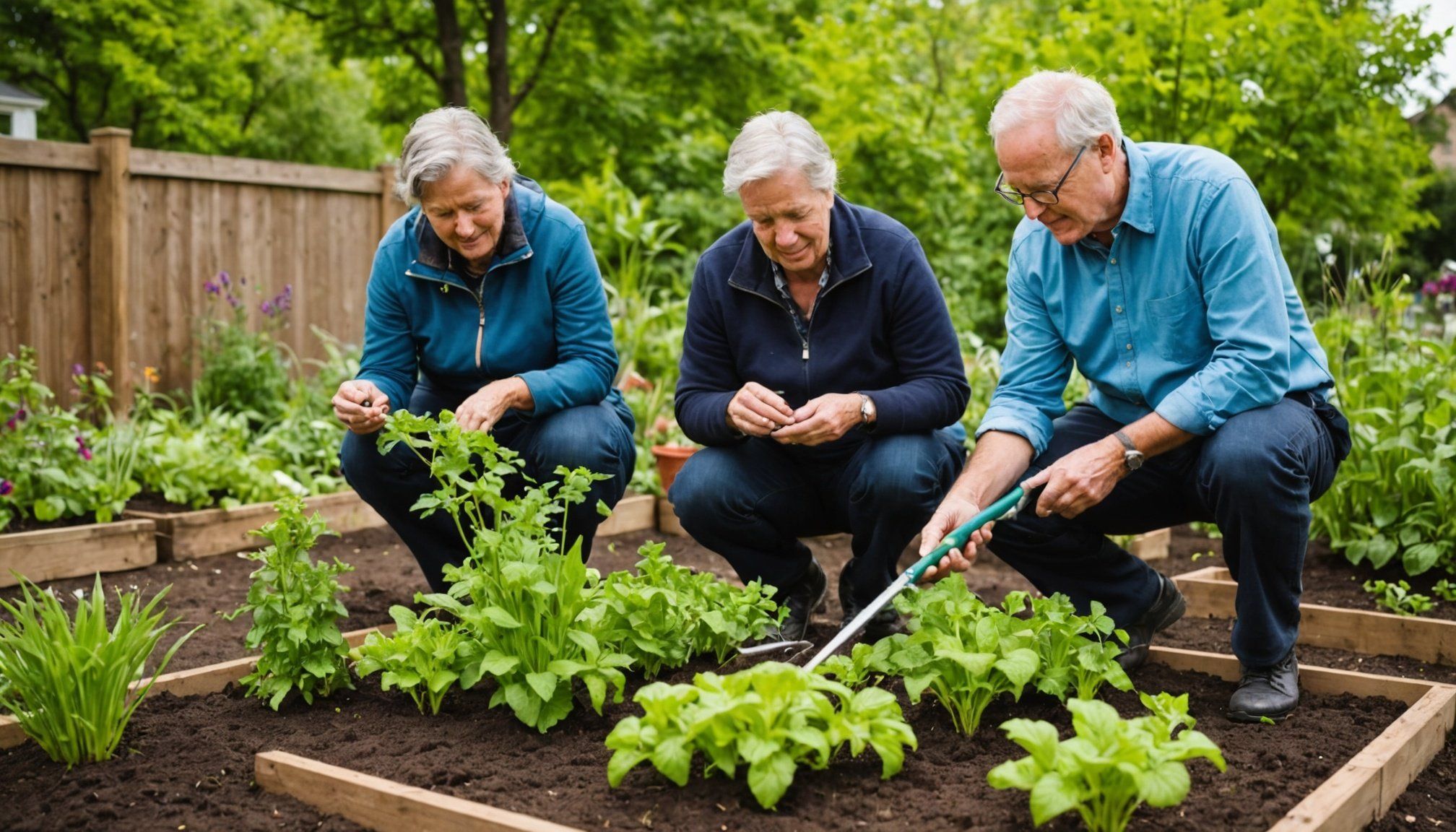Psychological Benefits of Community Gardening
Community gardening offers notable advantages for mental well-being, supported by evidence-based research. It has been shown to significantly reduce stress and anxiety, offering therapeutic relief in everyday life. The tactile nature of gardening—planting seeds, feeling the soil, and nurturing growth—fosters mindfulness, which offers a respite from daily stressors.
Physical activity, intrinsic to gardening, directly correlates with improved emotional well-being. Activities like digging, planting, and watering are forms of exercise that release endorphins, enhancing mood and reducing feelings of anxiety or depression. This connection between movement and mental health exemplifies why gardening can serve as an effective physical outlet.
Additional reading : Unpacking the benefits of group therapy in treating social anxiety disorder: an in-depth review
Moreover, community gardening plays an integral role in improving mental health due to the social interaction it provides. Being part of a community garden fosters a sense of belonging and reduces feelings of isolation, which are critical for maintaining psychological health. Conversations and collaborations that occur naturally in these settings contribute to the emotional support systems vital for community members.
Ultimately, the psychological benefits are multi-faceted: promoting mental health, providing a sense of self-achievement through growth and cultivation, and fostering social connections that enhance the overall well-being of participants.
Also to discover : Empowering caregivers: the life-changing impact of support groups for alzheimer’s patient caregivers
Successful Community Gardening Initiatives
Community gardening has seen significant success, proving its potential as a powerful tool for urban greening. Notable community gardening programs, such as the P-Patch in Seattle and the Bronx Green-Up in New York, illustrate effective community engagement and collaboration. These projects highlight the transformative power of gardens in densely populated areas.
Overview of Notable Community Gardening Programs
Programs like the Detroit Garden Resource Program emphasize community involvement. By providing resources and training, they empower residents to cultivate their plots, enhancing self-reliance and community spirit. Engaging local organizations helps strengthen these programs, offering necessary support and resources.
Case Studies of Successful Urban Gardens
Successful urban gardens such as the Brooklyn Grange integrate innovative approaches like rooftop gardening. These examples offer valuable insights into overcoming constraints and maximizing urban space for green initiatives.
Key Factors Contributing to Their Success
The success of these gardens often hinges on:
- Community involvement and engagement: Encouraging local participation fosters a sense of ownership and achievement.
- Inclusivity and collaboration: Diverse groups bring varied skills, enriching the gardening experience.
- Support networks: Local organizations provide the resources and expertise vital for thriving gardens.
These essential factors contribute to creating not only successful gardens but also vibrant, cohesive communities.
Practical Tips for Participating in Community Gardening
Engaging in community gardening is a rewarding pursuit, bridging urban spaces with nature’s tranquility. To embark on this journey, follow these strategic steps, ensuring a successful gardening participation experience.
Begin by researching local gardens through community bulletins or municipal websites. Locating nearby initiatives allows for practical engagement and an understanding of the garden’s ethos. When starting your own, consult experienced gardeners to guide plot selection and soil examination.
An essential aspect is community engagement. Attend meetings or volunteer for roles that encourage inclusive collaboration. This active involvement fosters relationships and bolsters a sense of belonging, vital for a fulfilling gardening experience. Contributing ideas or resources amplifies your commitment, nurturing a supportive environment.
Setting realistic goals is crucial. Prioritize manageable projects that align with both your interests and the community’s objectives. Establish clear timelines for planting and harvesting, fostering a structured approach that minimizes stress.
Creating an environment where support thrives involves sharing successes and challenges. Host events or workshops that promote knowledge exchange, enhancing collective resilience. Remember, whether you’re sowing seeds or friendships, community gardening plants the roots of personal growth and mutual well-being.
Addressing Urban Challenges through Gardening
Community gardening emerges as a viable solution to urban challenges, promoting environmental sustainability and enhancing community resilience. Urban settings often struggle with space constraints; however, innovative gardening methods address this limitation effectively. Techniques such as vertical gardening and container gardening maximize available space, transforming urban settings into green havens.
Overcoming Space Constraints in Urban Areas
Space scarcity in cities necessitates creativity. By utilizing vertical spaces—walls, fences, and trellises—gardeners effectively introduce greenery without needing extensive ground area. Rooftop gardens offer another solution, capitalizing on otherwise unused urban rooftops to cultivate lush plant life.
Benefits of Sustainable Practices in Community Gardens
Community gardens that adopt sustainable practices confer significant environmental benefits, like reducing urban heat and enhancing air quality, fostering biodiversity through native plant selection. Composting and rainwater harvesting are effective practices that minimize resource consumption and make gardens eco-friendlier.
How Community Gardens Promote Social Cohesion
By enhancing neighborhood relationships, community gardens foster social cohesion, offering shared goals and spaces that build stronger, interconnected communities. This collective gardening effort builds resilience against urban stressors and promotes adaptability. Evaluating these gardens’ environmental impact highlights their role in creating healthier, more sustainable urban environments.
Personal Testimonials and Expert Opinions
Sharing personal stories from those involved in community gardening highlights the profound impact on mental health. Individuals often report a sense of accomplishment and reduced stress. For instance, one gardener mentioned feeling rejuvenated and more connected to their surroundings after spending time with the earth and plants. These anecdotes support research demonstrating community gardening’s role in enhancing well-being.
Experts propose that community gardens serve as a catalyst for mental health improvement. Dr. Linda Smith, a psychologist specializing in therapeutic gardening, notes that the combination of physical activity, social interaction, and exposure to nature creates a unique therapeutic environment. According to Smith, “Community gardening not only fosters a sense of belonging but also establishes a routine that proves crucial for psychological stability.”
In examining the social and therapeutic elements, it’s evident that community gardens provide more than just fresh produce. Their ability to create a shared, supportive space aids in addressing broader social issues. An expert in urban planning, Professor John Curtis, emphasizes that these gardens bridge gaps across diverse groups, promoting inclusivity and understanding. Ultimately, community gardening offers therapeutic value, uniting people through shared goals and mutual support in a nurturing environment.











